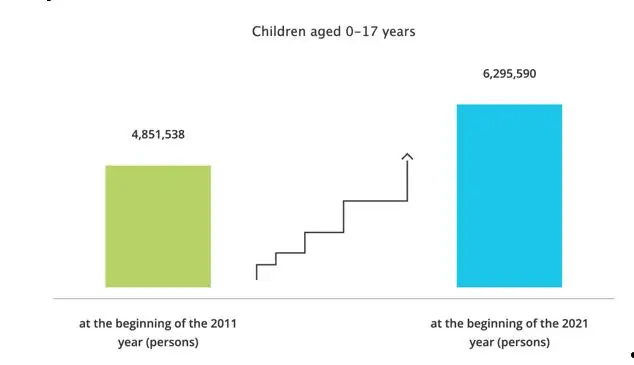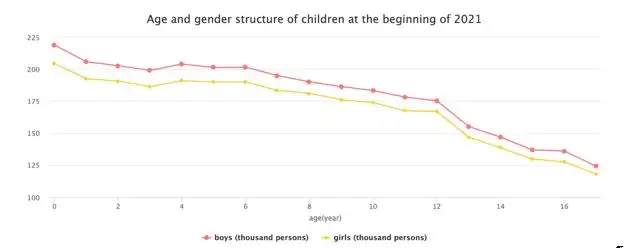Kazakhstan marks Children’s Day, continues strengthening protection of children’s rights

As some countries around the world, including Kazakhstan, mark June 1 as Children’s Day when challenges and threats come on multiple fronts, protecting children’s rights become more important than ever.

According to the data from Kazakhstan’s Bureau of National Statistics, there are 6,295,590 children in Kazakhstan aged from 0 to 17 years, which is more than 31 percent of the country’s population.

«International Children's Day is a wonderful holiday filled with special joy and warmth. This day reminds us all once again that there is nothing in the world more important than the happiness and smiles of children. The creation of favorable conditions for the comprehensive development of the younger generation has always been one of the main tasks of our state,» said Tokayev. He assured that the state will strengthen this direction of work.
2022 as the Year of Children in Kazakhstan
President Tokayev declared 2022 as the Year of Children in his New Year’s address to the nation.
On March 20, the government of Kazakhstan adopted the plan of measures for the Year of Children that envisions 66 events across 7 areas.
Some measures have so far been implemented. Since the beginning of the Year of Children, for the first time in the country, the Children's Well-Being Index has been developed and approved by the order of the Prime Minister as of February 1, 2022. The index was developed in partnership with the UNICEF office in Kazakhstan and the Economic Research Institute to assess child well-being and the degree of effectiveness of national policies aimed at creating conditions for children in various spheres. The process of its implementation is currently underway.
«300,000 children will be additionally covered by classes and activities. The coverage rate increased by 5 percent, from 70.5 percent to 75.5 percent, and reached 2,732,681 children,» said the Kazakh Ministry of Education and Science in an interview for this story.
To reduce the gap in the quality of knowledge of students, the ministry launched a Digital Teacher project to support 500,000 low-performing students and students with low socioeconomic status. The project is implemented with the Qazaqstan Halqyna Foundation.
Among other measures were to increase the number of grants for higher education institutions to 88,214, increase the number of places at technical and vocational educational institutions by 45,000, and exclude college entrance examinations.
«Work has begun to create regional project offices for the protection of children's rights called For the Good of the Children based on leading higher educational institutions. The potential of higher educational institutions, especially pedagogical ones, will be used to strengthen Kazakhstan's human rights institution for children,» said the ministry.
Children with special learning needs will also have more opportunities to access the education facilities. The network of psychological, medical, and pedagogical consultations (PMPCs) is expanding by six units, and 19 correction rooms and seven rehabilitation centers are being opened in the regions, which will reduce the waiting list and ensure that children with special educational needs receive timely qualified assistance.
The government will also purchase special equipment for 98 special boarding schools for children with disabilities.
«By 2025 there will be a 100 percent expansion of the network or 125 PMPCs. In line with the task set by the President, the norms of opening 1 PMPC were reduced from 60,000 to 50,000 children,» said the ministry.
In May, the Ministry of Education and Science and the Ministry of Health launched Alem Mental information system on suicide prevention using artificial intelligence technologies to monitor social media publications indicating signs of depressive behavior and suicidal tendencies among adolescents.
«The project became one of the solutions to monitor suicidal tendencies and moods in online space as well as to develop preventive measures,» said the ministry.
On May 3, the country adopted the law on the protection of children's rights, education, and information where the ministry will oversee the development of the rules that manage psychological services of educational organizations and the rules on the prevention of bullying.
Addressing the government meeting on June 1, Kazakhstan’s Vice Minister of Education and Science Sholpan Karinova said that 322 kindergartens for children of preschool age with a 34,000 capacity will be opened. 130 of them for 9,400 places have been opened within 5 months. By the end of the year, the coverage of kindergartens for children aged 3-6 years will reach 99.3 percent.
«In the new academic year, there will be a new course for grades 5-11 on patriotism and global competence, which includes citizenship, honesty, integrity, ethics, media literacy, and financial literacy classes,» said Karinova.
This year, the amount of funds allocated to child health care has also increased, said Minister of Health Azhar Giniyat at the government meeting on June 1.
«As part of the Year of the Children, the Ministry of Health has increased financing in several directions for the health protection of children. In particular, funding for preventive examinations of children increased by 54 percent from 10.9 billion tenge to 16.8 billion tenge. Total funding earmarked for school medicine increased from 22.2 billion tenge to 27.5 billion tenge,» said Giniyat.
Acute issues in children’s rights protection
Violence against children remains one of the most acute challenges in the protection of children’s rights in Kazakhstan, according to the UNICEF (United Nations Children's Fund) Representative in Kazakhstan Arthur van Diesen.
«There are two separate kinds of issues. One is child rights issues that affect the entire child population. And then specific categories of children that are at risk of having their rights violated, or generally missing out on benefits and services. Kazakhstan has made a lot of progress in the realization of child rights since independence. But there are still some areas that really need priority attention,» said Arthur van Diesen in an interview for this story.
Violence against children comes in different forms from physical violence to emotional violence and occurs in different places from homes to schools – with all incurring serious implications on children’s well-being and future growth.
«What we know about violence is that it is quite widely accepted in this society as well, particularly when it comes to using harsh disciplining in raising your child. In the most recent survey that we did, about half of the adult population of Kazakhstan considered it okay - harsh disciplining as part of their upbringing. So, it is still very much embedded in the social norms. The reason we are concerned about this is that we know that violence has very negative consequences for children. It has immediate consequences in terms of their health, and their mental well-being,» he said, stressing the long-term consequences.
Children who experience violence are more likely to commit violence when they grow up, which he described as a «learned behaviour.»
He brought up the data that indicates there were 2,088 crimes against children registered in Kazakhstan in 2021, and 44 percent were of a sexual nature. This, however, might be the tip of the iceberg.
Another acute issue concerns children who are taken out of a family and placed in a closed institution, which also poses significant risks to children’s development. Between 2016 and 2020, almost 6,000 children were admitted to institutions, he added.
Despite the progress that Kazakhstan has made in closing or transforming this kind of institution, risks are still in place.
«What we need to work on much more is the prevention of institutionalization. Now, what does that mean, quite often a child ends up in an institution, without there really being a strong reason for that child, ending up in the institution. If you look at the children and institutions, many of them, what we call social orphans, have one or sometimes two biological parents. But for whatever reason, the parents were not able to look after their children at home. What we need to focus our attention on is how we can support these families to actually keep their children at home. If it is an issue of poverty, for example, the solution is not to take that child away and put it in an institution. The solution is to provide the support that the family needs to climb out of poverty,» said the UNICEF Representative.
A strong support system around families is essential in protecting the children’s well-being.
In cases when children are found outside their family, creating a cadre of professional foster parents who are properly screened, monitored, and supervised, might be a solution, according to Arthur van Diesen.
Impact of COVID-19
While the COVID-19 infections are going down in Kazakhstan and in other countries around the world, the impact of the pandemic on children might stay for years to come. This includes gaps in immunization, education losses, and dropouts, among other implications.
«I think Kazakhstan has done a great job in terms of curbing the spread of the virus, and secondly, putting in place measures to mitigate the impact of this pandemic. But we always need to be on the lookout for where the next pandemic might come from. And we need to somehow be better prepared, the next time this happens. In all sectors, you can actually build measures of resilience,» said Arthur van Diesen.
The UN data indicates that globally schools were closed worldwide for almost 80 percent of the in-person instruction time during the first year of the pandemic and up to 1.6 billion schoolchildren were facing school closure.
In 2020, more than 23 million children did not have access to essential vaccines, 4 million more compared to 2019.
«If you look at the education sector, we learned a lot about how to provide remote education. And in the beginning, that was very hard. But gradually, it got better. And we are still building these capacities, not because it is still relevant for COVID, but because it will be relevant in the future,» he said.
The pandemic hit particularly hard on children who were already at higher risk – children with disabilities, children in migration, and children in low-income families.
Written by Assel Satubaldina
